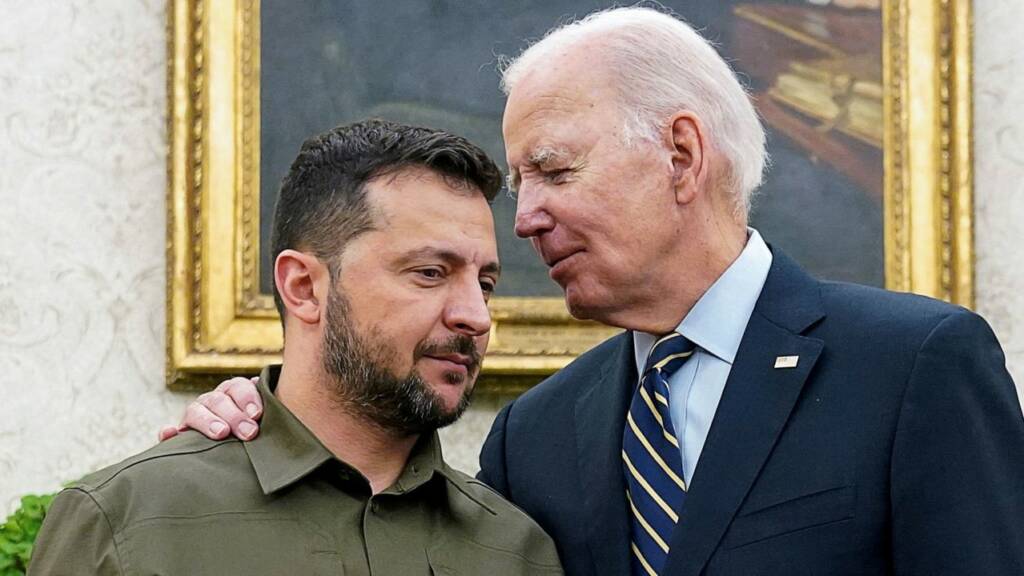In the realm of geopolitics, the financial chess game between the United States and Russia has taken an intriguing turn. Initially, President Biden aimed to empower Ukraine with a hefty 40 billion dollars package, a move seemingly designed to exert maximum pressure on Russia. However, the numbers on the negotiating table experienced a significant downsizing, halving to a more modest 20 billion dollars.
The final verdict on the aid package has been reached, and it raises eyebrows for its unexpectedly petite size. The curious trajectory of these financial deliberations raises questions about the intricate dynamics at play, leaving observers to ponder the underlying motivations and strategic calculations behind the final decision. As the geopolitical stage witnesses this fiscal maneuvering, the implications for the involved nations and the delicate balance of power in the region remain to be seen.
In response to the ongoing geopolitical tensions, Secretary of State Antony Blinken recently made a significant announcement regarding the United States’ commitment to support Ukraine. The statement outlined a substantial aid package, totaling up to $250 million, which includes a range of arms and equipment previously earmarked for drawdowns. Among the items listed are air defense munitions, components for air defense systems, various types of ammunition, including those for high mobility artillery rocket systems, and an impressive quantity of rounds—exceeding 15 million. This move by the U.S. comes at a critical juncture, coinciding with lawmakers’ negotiations on a deal that aims to ensure sustained support for Ukraine in the upcoming year.
Join us on Telegram: https://t.me/tfiglobal
The unveiling of this aid package by the State Department aligns with the ongoing discussions among lawmakers working to finalize a spending deal. The intricate diplomatic maneuvering underscores the complexity of the geopolitical landscape and the delicate balance of power. While the aid package is a testament to the U.S.’s commitment to bolster Ukraine, it also signifies the cautious navigation required in the face of evolving political dynamics.
The decision to provide a reduced aid package, however, points to a notable shift in political sentiment. Republicans, signaling a reluctance to extend further assistance to Ukraine, cite the nation’s stalled progress on the battlefield and the heightened challenges posed by winter conditions in confronting the invading Russian army. The seasonal and strategic considerations are influencing the calculus of aid allocation.
Moreover, European leaders have grown increasingly pessimistic about Ukraine’s ability to repel Russia’s military advances and reclaim lost territory in the country’s eastern provinces. This skepticism, shared by key allies, has played a pivotal role in shaping the size and scope of the aid package. As geopolitical realities continue to evolve, the aid provided becomes a reflection of the nuanced geopolitical considerations and the delicate balance of power at play on the global stage.
In a recent turn of events, both President Biden and President Zelensky have faced significant setbacks in their respective ambitions. For Biden, the setback comes as a huge blow to his aspirations and plans for the nation. The unforeseen challenges have thrown a wrench in the gears of his administration, forcing a reevaluation of priorities.
Simultaneously, Ukrainian President Zelensky finds himself grappling with unexpected obstacles, dealing a severe blow to his expectations for the country. The hurdles appear to complicate the path to achieving his goals, adding a layer of complexity to the political landscape.
These setbacks underscore the unpredictable nature of geopolitics, where even the best-laid plans can be disrupted by unforeseen circumstances. Both leaders now face the formidable task of navigating through these challenges and adjusting their strategies accordingly. The ripple effects of these setbacks extend beyond national borders, influencing the dynamics of international relations.
In conclusion, the recent developments in geopolitics serve as a stark reminder of the inherent uncertainties in the political arena. Both President Biden and President Zelensky must now reassess their approaches in the face of unexpected challenges, emphasizing the need for adaptability and resilience on the global stage. As the world watches, the ability of leaders to navigate these turbulent waters will undoubtedly shape the course of future geopolitical events.
Recommended Video:
